#tylosaurinae
Text

A mosasaur jaw of a Tylosaurus sp. from the Pierre Shale in Phillips County, Kansas, USA. The species Tylosaurus proriger and Tylosaurus pembinensis are both described from this deposit; the replacement teeth suggests it belongs to the former.
#mosasaur#fossils#paleontology#palaeontology#paleo#palaeo#tylosaurus#tylosaurinae#mosasauridae#cretaceous#mesozoic#prehistoric#science#paleoblr#ティロサウルス#モササウルス科#化石#古生物学
11 notes
·
View notes
Text
Hainosaurus boubker. To be honest I find that my mosasaur reconstructions are some of my more weaker ones.

With Hatsune Miku for scale:

#hainosaurus#tylosaurus(?)#tylosaurinae#mosasauridae#marine reptile#squamata#squamates#paleoart#digital doodle
15 notes
·
View notes
Text



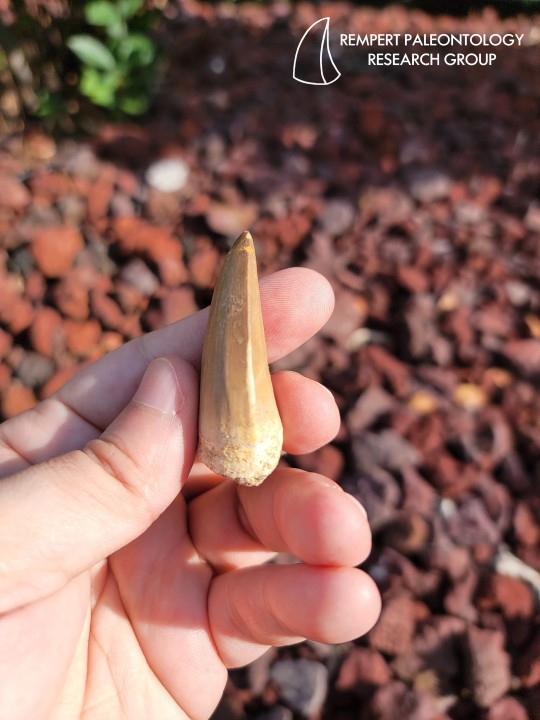
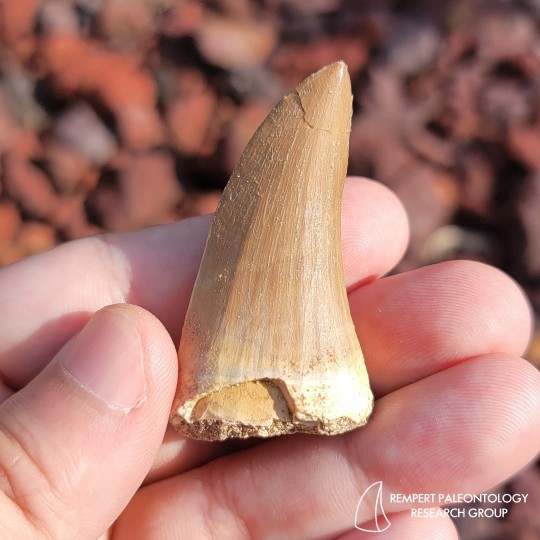

Fossil tooth of Hainosaurus boubker. Hainosaurus was a giant predatory mosasaur from the last age of the Cretaceous. A member of the Tylosaurinae, Hainosaurus had sharp, knife-like teeth for cutting prey to pieces.
4 notes
·
View notes
Photo
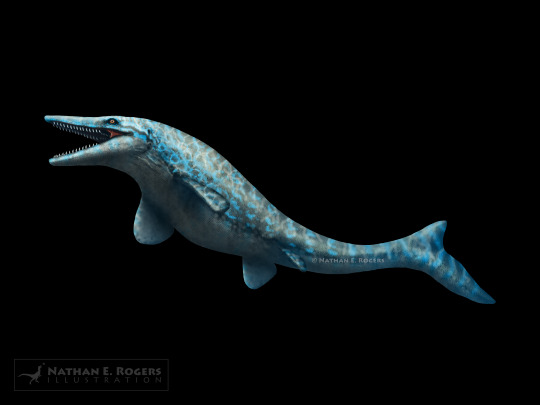
Tylosaurus
Late Cretaceous
I had the great opportunity to work on this image for the Mace Brown Museum of Natural History at the College of Charleston, SC, with guidance from paleontologist Dr. Scott Persons.
You can watch a virtual tour of the Museum's exhibits at:
https://www.youtube.com/watch?v=zNZ9NcUeXAA&list=PL4-bAC0oaWu445vvKgvIqIxP8OCndikoV
#natural history#science#paleontology#Illustration#paleoart#tylosaurus#mosasaur#mosasauridae#tylosaurinae#late cretaceous#marine reptile
329 notes
·
View notes
Text
Tylosaurus proriger, T. nepaeolicus, T. pembinensis, T. saskatchewanensis

Art by: RJ Palmer, https://www.deviantart.com/arvalis/art/Tylosaurus-768304483
Name: Tylosaurus proriger, T. nepaeolicus, T. pembinensis, T. saskatchewanensis
Name Meaning: Knob lizard
First Described: 1872
Described By: Marsh
Classification: Chordata, Tetrapoda, Reptilia, Squamata, Mosasauroidea, Mosasauridae, Tylosaurinae
Tylosaurus was an apex predator that patrolled the Western Interior Seaway of the Late Cretaceous. What’s really interesting about this mosasaur is that the very front tip of the jaws were toothless. It’s hypothesized that the absence of teeth in this part of the snout may have allowed it to act like a battering ram for Tylosaurus to shock and stun its prey during a hunt, similar to killer whales of today. I previously mentioned that Taniwhasaurus may have also used this same hunting strategy as well. A juvenile specimen of Tylosaurus was discovered in 2018, its snout greatly differed from other Tylosaurus juveniles which can tell us about the ontogeny of how juveniles had a quick development of snout projection over time. We know Tylosaurus was clearly an equal opportunity predator, as we see its stomach contents which included a plesiosaur, other much smaller mosasaurs, Hesperornis, sharks, fish, and we even see teeth marks which we suspect came from Tylosaurus on a Hadrosaur carcass that was washed out to sea.
Sources:
https://en.wikipedia.org/wiki/Tylosaurus
#Tylosaurus#palaeoblr#paleontology#palaeontology#prehistoric#Mesozoic#ancient marine reptiles#Not a dinosaur#mosasauroidea
67 notes
·
View notes
Text
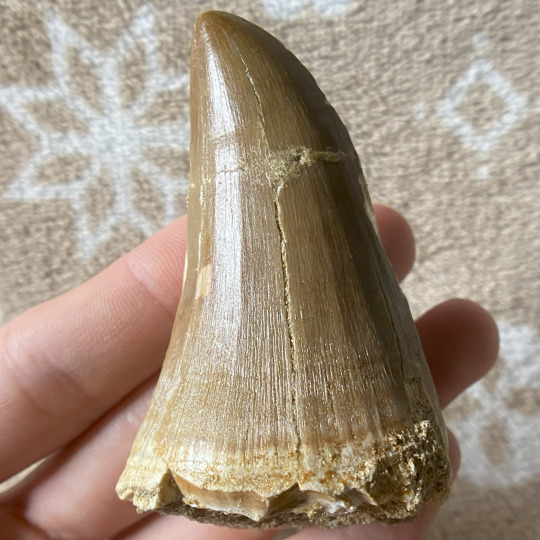
A mosasaur tooth of a Hainosaurus boubker from the Couche III in the phosphate mines of Sidi Chennane, Oued Zem, Khouribga, Morocco. This close relative of Tylosaurus lived alongside other large genera like Thalassotitan, Prognathodon, and Mosasaurus. Prior to description, mosasaur fossils with tylosaurine affinity have been known for some time from the Maastrichtian aged phosphates deposits of Morocco. One key characteristic of these teeth is the tertiary striae towards the base of the crown.
#mosasaur#fossils#paleontology#palaeontology#paleo#palaeo#hainosaurus#tylosaurus#tylosaurinae#mosasauridae#cretaceous#mesozoic#prehistoric#science#paleoblr#ハイノサウルス#ティロサウルス#モササウルス科#化石#古生物学
7 notes
·
View notes
Text
Taniwhasaurus oweni, T. antarcticus, T. mikasaensis
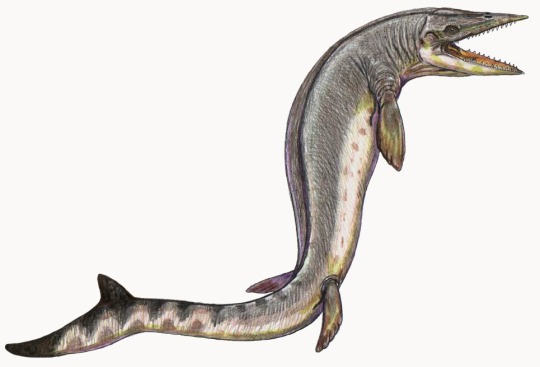
Art by: Dmitry Bogdanov, Public Domain
Name: Taniwhasaurus oweni, T. antarcticus, T. mikasaensis
Name Meaning: Taniwha lizard, from Māori Taniwha, an aquatic supernatural being
First Described: 1874
Described By: Hector
Classification: Chordata, Tetrapoda, Reptilia, Squamata, Mosasauridae, Tylosaurinae
This mosasaur was found in New Zealand, Antarctica, and Japan. It’s closely related to Hainosaurus, who I have covered in a previous post, and also Tylosaurus who will be covered shortly. The very front tip of the jaws of Taniwhasaurus actually were toothless, no teeth at all. This interestingly infer that Taniwhasaurus may have used its frontal jaws like a battering ram in order to ram into its prey during a kill. This tactic of hunting is similar to what modern marine animals such as killer whales use to stun their victims during an attack. In addition, Taniwhasaurus may have been a generalist that fed and hunted whatever it could take down.
Sources:
http://www.prehistoric-wildlife.com/species/t/taniwhasaurus.html
https://en.wikipedia.org/wiki/Taniwhasaurus
#Taniwhasaurus#palaeoblr#paleontology#palaeontology#prehistoric#Mesozoic#ancient marine reptiles#Not a dinosaur#mosasauroidea
27 notes
·
View notes
Text
Kaikaifilu hervei

Art by: Jorge Aragón, https://www.deviantart.com/jorgearagon/art/A-KAIKAIFILU-HERVEI-B-CRANEO-C-HUMERO-644629863
Name: Kaikaifilu hervei
Name Meaning: In honor of Kai-Kai filú, an ocean god in Mapuche cosmology and culture from South America
First Described: 2016
Described By: Otero et al.,
Classification: Chordata, Tetrapoda, Reptilia, Squamata, Mosasauridae, Tylosaurinae
Next, I present to you Kaikaifilu, a mosasaur that lived in Antarctica during the Late Cretaceous Period! Kaikaifilu is so far, one of the largest mosasaurs that was discovered from Antarctica’s Lopez de Bertodano Formation. We can see that the specimen found was an adult, as the bones found in the skull were completely fused. Paleontologists uncovered its jaw (fragmentary), and part of the humerus of this tylosaurine mosasaur. In addition, it exhibited heterodonty just like Eremiasaurus, a mosasaur that I covered in an earlier post. Variations within its dentition can infer that it was a generalist that didn’t specialize or have a specific type of prey that it consumed; it went with the flow when it came to consumption. Kaikaifilu was also contemporaries with Aristonectes, a plesiosaur that also lived in the same ecosystem.
Sources:
Otero, R. A., Soto-Acuña, S., Rubilar-Rogers, D., & Gutstein, C. S. (2017). Kaikaifilu hervei gen. et sp. nov., a new large mosasaur (Squamata, Mosasauridae) from the upper Maastrichtian of Antarctica. Cretaceous Research, 70, 209–225. doi:10.1016/j.cretres.2016.11.002
https://en.wikipedia.org/wiki/Kaikaifilu
#kaikaifilu hervei#kaikaifilu#palaeoblr#paleontology#palaeontology#prehistoric#mesozoic#not a dinosaur#mosasauroidea#ancient marine reptiles
24 notes
·
View notes